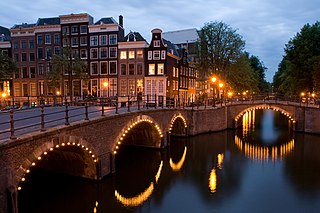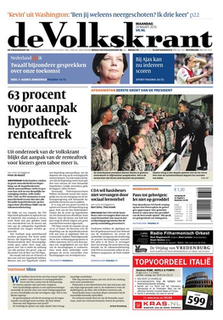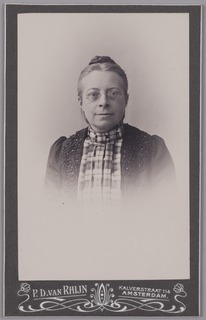Related Research Articles

Amsterdam is the capital and most populous city of the Netherlands with a population of 872,680 within the city proper, 1,558,755 in the urban area and 2,480,394 in the metropolitan area. Found within the province of North Holland, Amsterdam is colloquially referred to as the "Venice of the North", due to the large number of canals which form a UNESCO World Heritage Site.
Ad hominem, short for argumentum ad hominem, refers to several types of arguments, some but not all of which are fallacious. Typically this term refers to a rhetorical strategy where the speaker attacks the character, motive, or some other attribute of the person making an argument rather than attacking the substance of the argument itself. The most common form of ad hominem is "A makes a claim x, B asserts that A holds a property that is unwelcome, and hence B concludes that argument x is wrong".

Andrew Stuart Tanenbaum, sometimes referred to by the handle ast, is an American-Dutch computer scientist and professor emeritus of computer science at the Vrije Universiteit Amsterdam in the Netherlands.

The Dutch East India Company, officially the United East India Company, was a megacorporation founded by a government-directed consolidation of several rival Dutch trading companies in the early 17th century. It is believed to be the largest company to ever have existed in recorded history. It was established on March 20, 1602, as a chartered company to trade with Mughal India in the early modern period, from which 50% of textiles and 80% of silks were imported, chiefly from its most developed region known as Bengal Subah. In addition, the company traded with Indianised Southeast Asian countries when the Dutch government granted it a 21-year monopoly on the Dutch spice trade.

De Stijl, Dutch for "The Style", also known as Neoplasticism, was a Dutch art movement founded in 1917 in Leiden. De Stijl consisted of artists and architects. In a more narrow sense, the term De Stijl is used to refer to a body of work from 1917 to 1931 founded in the Netherlands. Proponents of De Stijl advocated pure abstraction and universality by a reduction to the essentials of form and colour; they simplified visual compositions to vertical and horizontal, using only black, white and primary colors.

de Volkskrant is a Dutch daily morning newspaper. Founded in 1919, it has a nationwide circulation of about 250,000.

NRC Handelsblad, often abbreviated to NRC, is a daily evening newspaper published in the Netherlands by NRC Media. It is generally accepted as a newspaper of record in the Netherlands.

The Algemeen Dagblad or AD is a Dutch daily newspaper based in Rotterdam, Netherlands.

De Telegraaf is the largest Dutch daily morning newspaper. Paul Jansen has been the editor-in-chief since August 2015. De Telegraaf is based in Amsterdam. The paper is owned by Mediahuis.

The Vrije Universiteit Amsterdam is a public research university in Amsterdam, Netherlands, founded in 1880, and consistently ranks among the top 150 universities in the world by major ranking tables. The VU is one of two large, publicly funded research universities in the city, the other being the University of Amsterdam (UvA). The literal translation of the Dutch name Vrije Universiteit is "Free University". "Free" refers to independence of the university from both the State and the Dutch Reformed Church. Both within and outside the university, the institution is commonly referred to as "the VU". Although founded as a private institution, the VU has received government funding on a parity basis with public universities since 1970. The university is located on a compact urban campus in the southern Buitenveldert neighbourhood of Amsterdam and adjacent to the modern Zuidas business district.

Adriaen Cornelissen van der Donck was a lawyer and landowner in New Netherland after whose honorific Jonkheer the city of Yonkers, New York, is named. Although he was not, as sometimes claimed, the first lawyer in the Dutch colony, Van der Donck was a leader in the political life of New Amsterdam, and an activist for Dutch-style republican government in the Dutch West India Company-run trading post.

Rembrandt Harmenszoon van Rijn, usually simply known as Rembrandt, was a Dutch Golden Age painter, printmaker and draughtsman. An innovative and prolific master in three media, he is generally considered one of the greatest visual artists in the history of art and the most important in Dutch art history. Unlike most Dutch masters of the 17th century, Rembrandt's works depict a wide range of style and subject matter, from portraits and self-portraits to landscapes, genre scenes, allegorical and historical scenes, and biblical and mythological themes as well as animal studies. His contributions to art came in a period of great wealth and cultural achievement that historians call the Dutch Golden Age, when Dutch art, although in many ways antithetical to the Baroque style that dominated Europe, was extremely prolific and innovative and gave rise to important new genres. Like many artists of the Dutch Golden Age, such as Jan Vermeer of Delft, Rembrandt was also an avid art collector and dealer.
Ernst van de Wetering was a Dutch art historian and an expert on Rembrandt and his work.

Sorrowing Old Man is an oil painting by Vincent van Gogh that he made in 1890 in Saint-Rémy de Provence based on an early lithograph. The painting was completed in early May at a time when he was convalescing from a severe relapse in his health some two months before his death, which is generally accepted as a suicide.

The Allard Pierson Museum is the archaeological museum of the University of Amsterdam. It is situated at the Oude Turfmarkt 127 in Amsterdam, the Netherlands. Artifacts from the ancient civilizations of ancient Egypt, the Near East, the Greek World, Etruria, and the Roman Empire are curated and exhibited in this museum.

The financial history of the Dutch Republic involves the interrelated development of financial institutions in the Dutch Republic. The rapid economic development of the country after the Dutch Revolt in the years 1585–1620 accompanied by an equally rapid accumulation of a large fund of savings, created the need to invest those savings profitably. The Dutch financial sector, both in its public and private components, came to provide a wide range of modern investment products beside the possibility of (re-)investment in trade and industry, and in infrastructure projects. Such products were the public bonds, floated by the Dutch governments on a national, provincial, and municipal level; acceptance credit and commission trade; marine and other insurance products; and shares of publicly traded companies like the Dutch East India Company (VOC), and their derivatives. Institutions like the Amsterdam stock exchange, the Bank of Amsterdam, and the merchant bankers helped to mediate this investment. In the course of time the invested capital stock generated its own income stream that caused the capital stock to assume enormous proportions. As by the end of the 17th century structural problems in the Dutch economy precluded profitable investment of this capital in domestic Dutch sectors, the stream of investments was redirected more and more to investment abroad, both in sovereign debt and foreign stocks, bonds and infrastructure. The Netherlands came to dominate the international capital market up to the crises of the end of the 18th century that caused the demise of the Dutch Republic.

The Deutsche Zeitung in den Niederlanden was a German-language nationwide newspaper based in Amsterdam, which was published during almost the entire occupation of the Netherlands in World War II from June 5, 1940 to May 5, 1945, the day of the German capitulation in the "Fortress Holland". Its objective was to influence the public opinion in the Netherlands, especially the one of the Germans in this country.

Tree Roots is an oil painting by Vincent van Gogh that he painted in July 1890 when he lived in Auvers-sur-Oise, France. The painting is an example of the double-square canvases that he employed in his last landscapes.

Abraham Goos was a Dutch cartographer, publisher, and engraver. He made globes, maps of North America, a comprehensive map of European coastlines, and the first printed Hebrew language map of The Holy Land.

Catharine van Tussenbroek was a Dutch physician and feminist. She was the second woman to qualify as a physician in the Netherlands and the first physician to confirm evidence of the ovarian type of ectopic pregnancy. A foundation that administers research grants was set up in her name to continue her legacy of empowering women.
References
- ↑ A.W. Musschenga (31 August 2002). Personal and Moral Identity. Springer Science & Business Media. p. 158. ISBN 978-1-4020-0764-4.
- ↑ Arie Theodorus van Deursen; Herbert Donald Morton (2008). The distinctive character of the Free University in Amsterdam, 1880-2005: a commemorative history. Wm. B. Eerdmans Publishing. p. 405. ISBN 978-0-8028-6251-8.
- ↑ "Keynote speakers". Dicim. 2013. Retrieved 19 January 2015.
- ↑ C. Duijnstee; E. van den Borne (2008). Mediadesk Handboek. Kluwer. p. 502. ISBN 978-90-13-05246-6.